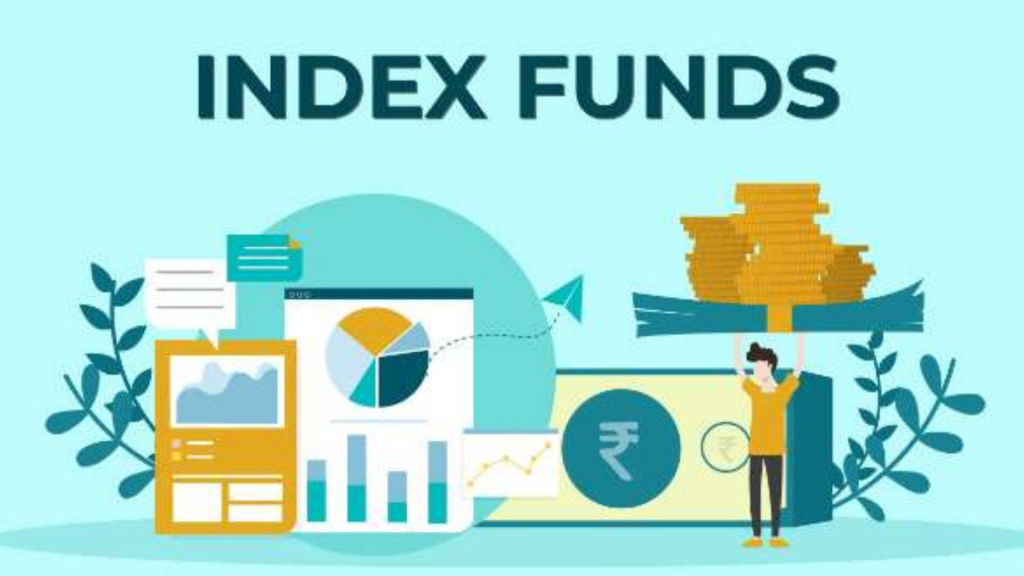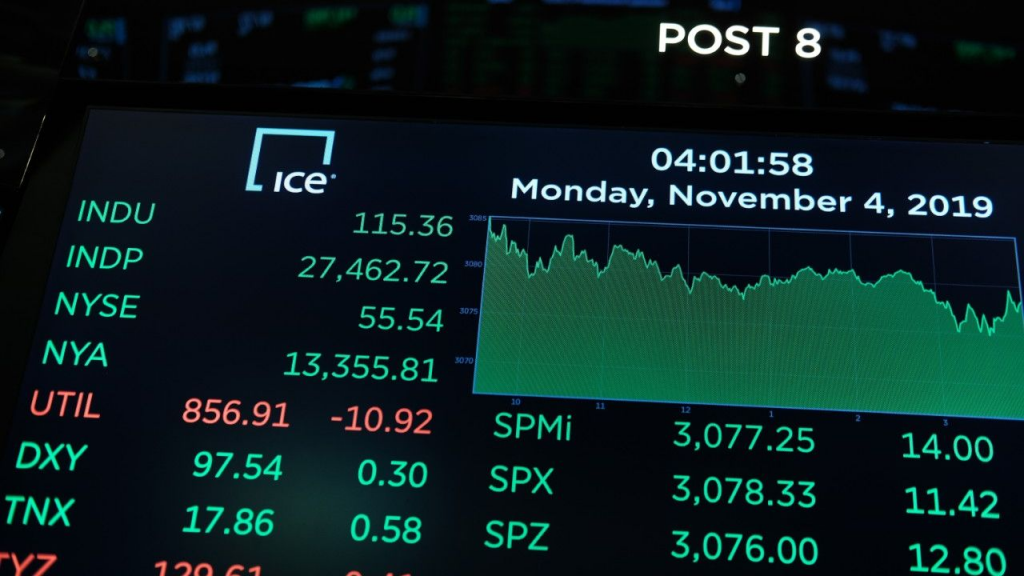For many investors especially beginners navigating the world of stocks, bonds, and mutual funds can feel overwhelming. With thousands of options and constant market changes, it’s easy to get lost in complexity. That’s where index funds come in: a low-cost, low-effort, and time-tested investment option that can help you build long-term wealth.
What Are Index Funds?
An index fund is a type of mutual fund or exchange-traded fund (ETF) that aims to replicate the performance of a specific market index. Rather than trying to outperform the market through active management, index funds passively track an index like the S&P 500, Nasdaq 100, or Dow Jones Industrial Average.
When you invest in an index fund, you’re buying a small slice of every company included in that index. For example, an S&P 500 index fund gives you exposure to 500 of the largest U.S. companies, including Apple, Microsoft, Amazon, and Google, in one investment.
Why Index Funds Are Popular
Index funds have gained enormous popularity over the past two decades for several reasons:

- Simplicity
Index funds are easy to understand and require no specialized knowledge to invest in. You don’t have to pick individual stocks or time the market. You simply invest in the entire market. - Low Fees
Since index funds are passively managed (they mirror an index rather than trying to beat it), they usually have much lower expense ratios than actively managed funds. These savings in fees can significantly boost your returns over time. - Diversification
By tracking an index, these funds automatically provide broad diversification. A single index fund can give you exposure to hundreds or even thousands of companies, spreading out your risk. - Consistent Performance
Historically, index funds have outperformed most actively managed funds over the long term. While they don’t aim to beat the market, they often end up doing better than professional fund managers who try.
How Index Funds Work
Let’s say you invest $1,000 in an index fund that tracks the S&P 500. That money is automatically distributed across the 500 companies in the index, weighted by market capitalization. That means your money is more heavily invested in larger companies, like Apple and Microsoft, and less in smaller ones.
As the value of the companies in the index rises or falls, so does the value of your fund. You’ll earn returns through capital appreciation (the price going up) and dividends paid by the companies in the index.
Index Funds vs. Actively Managed Funds
Actively managed funds employ portfolio managers who try to beat the market by selecting specific stocks or timing their trades. These managers typically charge higher fees and are more likely to underperform over time, especially after accounting for costs.
Index funds, by contrast, don’t try to beat the market they aim to match it. This approach tends to be more reliable for long-term investors because it avoids the risks of poor stock selection and high fees.
| Feature | Index Funds | Actively Managed Funds |
|---|---|---|
| Strategy | Passive | Active |
| Fees | Low | Higher |
| Risk | Lower due to diversification | Higher depending on manager’s choices |
| Performance | Often beats active over time | Varies; many underperform the index |
Best Index Funds for Beginners
Here are some well-known and widely recommended index funds that are suitable for beginners:
- Vanguard 500 Index Fund (VFIAX) – Tracks the S&P 500
- Schwab U.S. Broad Market ETF (SCHB) – Tracks the entire U.S. stock market
- Fidelity ZERO Total Market Index Fund (FZROX) – No expense ratio, broad exposure
- Vanguard Total Stock Market ETF (VTI) – Covers small-, mid-, and large-cap U.S. stocks
- iShares Core MSCI EAFE ETF (IEFA) – International developed markets
These funds can typically be purchased through major brokers like Vanguard, Fidelity, Schwab, or Robinhood with low or no minimum investment amounts.
How to Invest in Index Funds

Investing in index funds is easy and doesn’t require a lot of money to get started. Here’s a step-by-step guide:
- Open an Investment Account
You’ll need a brokerage account or retirement account (like an IRA) to invest. Many online brokers offer zero commission trades and no minimum balances. - Choose the Right Fund
Decide which index you want to track (e.g., S&P 500, total market, international) based on your goals and risk tolerance. - Determine Your Investment Amount
Start with whatever amount you’re comfortable with. You can invest a lump sum or set up automatic contributions. - Buy and Hold
Index investing is a long-term strategy. Don’t worry about short term market ups and downs stay consistent, keep investing, and let compound interest work in your favor.
When Are Index Funds Not Ideal?
While index funds are great for most investors, they may not be suitable for those looking for:
- Short-term gains – Index funds are not get-rich-quick tools.
- High-risk/high-reward strategies – These funds prioritize stability and diversification.
- Niche market exposure – Investors wanting to focus on specific industries or themes (like biotech or crypto) may prefer sector-specific ETFs or active strategies.
For many investors especially beginners the world of stocks, bonds, and mutual funds can feel overwhelming. With thousands of investment options, constant news cycles, and unpredictable market movements, it’s easy to get lost in complexity.
Index funds stand out as a low-cost, low-effort, and time-tested option that allows you to build wealth steadily without the stress of picking individual winners. They’ve been a favorite of financial experts like Warren Buffett, who famously advised that most people should put the majority of their money in a low-cost S&P 500 index fund.
Why Index Funds Work
Index funds don’t try to outsmart the market — they simply be the market. And because markets tend to rise over the long term despite short-term dips, tracking them consistently can be a winning strategy.
Core benefits:
- Broad diversification — One purchase gives exposure to hundreds or thousands of companies.
- Low fees — Less money going to management costs means more stays invested.
- Time efficiency — No need to follow daily stock market news or earnings reports.
- Reliable performance — Historically, many index funds outperform the majority of actively managed funds over decades.
Additional Advantages You Might Not Know
- Automatic Rebalancing
Index funds adjust their holdings when the underlying index changes. If a company is added or removed from the S&P 500, the fund updates automatically. - Behavioral Protection
Passive investing reduces emotional decision-making no panic-selling after bad headlines about one company. - Easy to Combine
You can blend a few index funds to build a complete global portfolio:- U.S. total market fund
- International developed markets fund
- Emerging markets fund
- Bond index fund for stability
- Tax Efficiency
Many index funds have lower turnover (fewer trades), which can reduce taxable capital gains distributions.
Potential Drawbacks to Consider
No investment is perfect. Index funds have some limitations:
- No Outperformance — By design, they match the market, not beat it.
- Market Risk — If the market drops, so will your fund. Diversification reduces risk but doesn’t eliminate it.
- Sector Concentration — Some indexes (like the S&P 500) are heavily weighted toward a few large tech companies.
- Lack of Customization You can’t hand-pick companies to avoid (e.g., if you want socially responsible investing, you need ESG-specific index funds).
How to Build a Portfolio with Index Funds
The simplest approach is the “Three-Fund Portfolio”:
- U.S. Total Stock Market Fund Covers all U.S. companies.
- International Stock Market Fund Provides exposure outside the U.S.
- U.S. Bond Market Fund Adds stability and income.
Example allocation for a moderate-risk investor:
- 60% U.S. stocks (e.g., VTI or FZROX)
- 20% international stocks (e.g., VXUS or IEFA)
- 20% bonds (e.g., BND or AGG)
You can adjust these percentages based on your age, risk tolerance, and goals.
Index Funds vs. ETFs: Which to Choose?
Both mutual fund index funds and ETFs track indexes, but there are differences:
- ETFs trade like stocks during the day, often with lower expense ratios and tax efficiency.
- Mutual funds allow automatic investment in set amounts, even fractional shares, which is convenient for beginners.
For most new investors, ETFs provide flexibility, while mutual funds provide simplicity.
Impact of Dividends and Taxes
Index funds often pay dividends from the companies they hold. These can be:
- Qualified dividends taxed at lower capital gains rates.
- Non-qualified dividends taxed as regular income.
Tip: Reinvesting dividends can significantly increase long-term returns through compounding. Many brokers offer a DRIP (Dividend Reinvestment Plan) to do this automatically.

Common Beginner Mistakes with Index Funds
- Switching Funds Too Often — Chasing last year’s best performer can lead to lower returns.
- Ignoring Asset Allocation — Only buying one type of index fund (e.g., S&P 500) may leave you under-diversified.
- Not Considering Fees Across Accounts — Even low fees compound over time; always compare expense ratios.
- Panicking During Market Drops — Selling in a downturn locks in losses instead of letting the market recover.
- Neglecting Bonds — Even aggressive investors can benefit from some stability in their portfolio.
Case Study: The Power of Staying Invested
Imagine two investors, Alex and Taylor, each investing $500/month for 20 years into an S&P 500 index fund with an average annual return of 8%:
- Alex invests consistently, regardless of market conditions.
- Taylor pauses contributions during market downturns, missing the first year of each recovery.
Result after 20 years:
- Alex: ~$294,000
- Taylor: ~$225,000
The difference? Staying disciplined and invested through all market cycles.
When Index Funds May Not Be Ideal
- If you need short-term liquidity (less than 3–5 years), index funds are too volatile.
- If you want niche exposure to industries like biotech, green energy, or cryptocurrency, sector-specific ETFs may be better.
- If you prefer active stock-picking as a hobby, index funds won’t satisfy that interest.
Practical Tips for Beginners
- Start Small but Consistent — Even $50/month can grow significantly over decades.
- Automate Contributions — Removes the temptation to skip months.
- Use Dollar-Cost Averaging (DCA) — Invest the same amount regularly to smooth out market volatility.
- Review Once a Year — Adjust allocation based on life changes, not market noise.
- Prioritize Low Fees — Choose funds with expense ratios below 0.20% if possible.
Conclusion
Index funds offer one of the simplest and most effective ways to invest. With low fees, broad diversification, and a strong historical track record, they are an excellent foundation for any investment portfolio. Whether you’re just getting started or looking to streamline your finances, index funds provide a straightforward path to long-term wealth without the stress of picking individual stocks.
If you’re looking for a hands-off way to grow your money, start exploring index funds today they just might be the smartest investment you’ll ever make.
